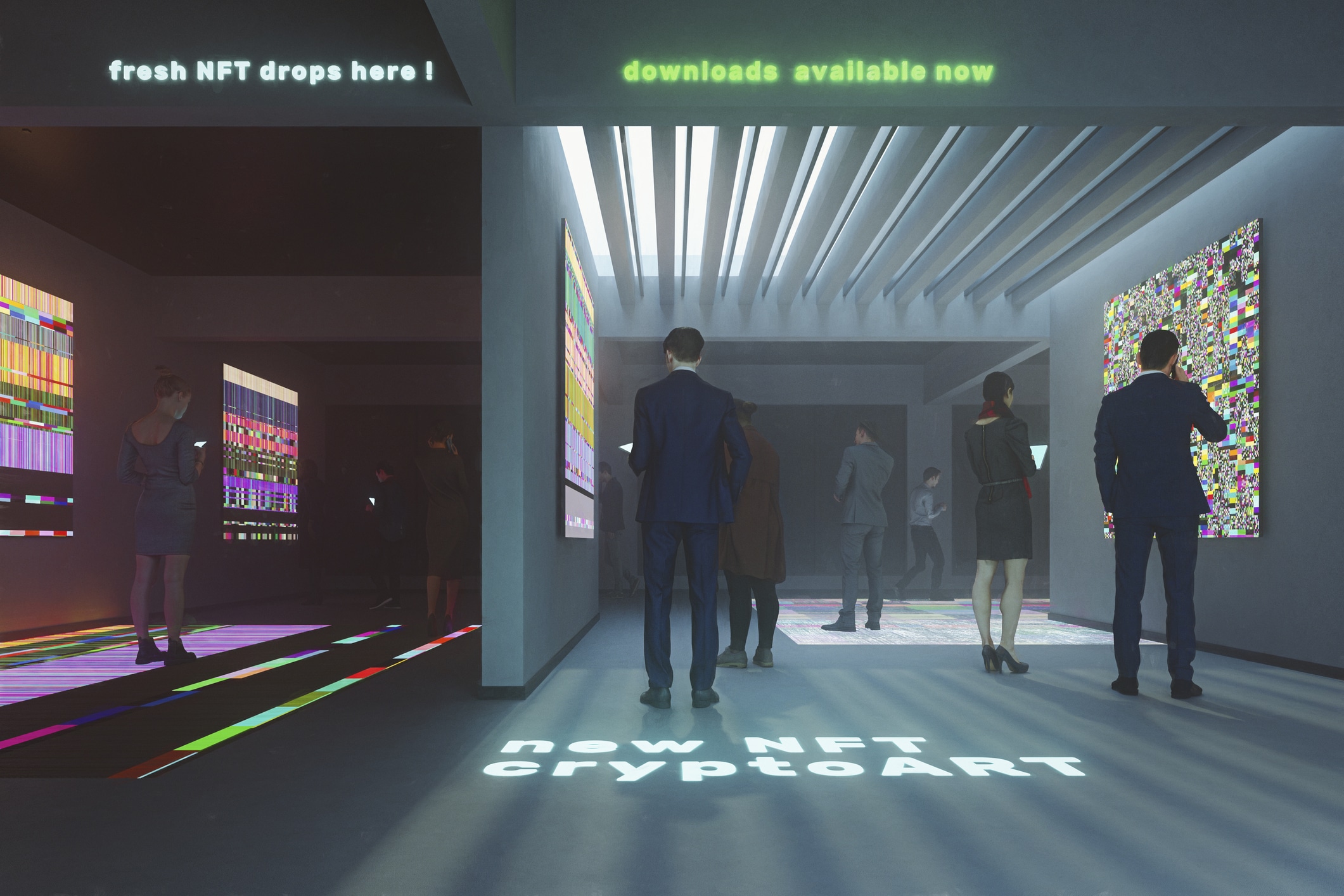NFTs have been making waves in the art world, with recent high-profile pieces selling for millions of dollars and high-profile art auctioneers participating in the sales. However, many see the main benefits of NFTs in allowing transparency of ownership and royalties for the artists. One online South African art fair is in agreement, and launched their own NFT offering this week.
Imagine a world where artists earn royalties for every sale of their work in perpetuity, a world where ownership of a piece’s history is public record? With the advent of Non-Fungible Tokens (NFT) transforming the art world globally, that reality is here, and South African art and artists are entering the NFT game along with museums, and looking to transform the way art is bought and sold forever. Confused by what an NFT is? First, we need to understand what is termed ‘the blockchain’, on which NFTs are built. Here’s a simple analogy; your bank processes all transactions between yourself and others, and keeps track of your account balance and those of thousands of others. It also talks to other banks which do the same thing. Now imagine that these transactions are public, and being managed by thousands of different computers across the world – that’s the blockchain. An NFT is a symbol or representation of something that’s unique; imagine you own a jacket for 10 years. You could buy a new jacket of the same make and the same size etc, but it wouldn’t be the exact one you’ve had for 10 years – that’s an NFT. The proof of these transactions and the contracts of sale are built into the blockchain itself, so they can be verified independently.
Think this is too complicated? You’re not alone.
“I’m clueless but excited,” says Koos Groenewald, one half of Jana + Koos, an art and design duo who are participating in South African online art fair Latitudes’ first NFT offering. “It’s like an internal combustion engine. You don’t need to understand how internal combustion works in order to benefit from it.” Latitudes aims to be “the first African marketplace for art-focused NFTs”, and made their first offering in the space yesterday with their Made it to the life raft collection, which offers silk scarves for sale online by eight South African artists. The first 25 people to purchase each scarf receive a free NFT with their purchase. “You can’t really be in the art world right now and not be thinking about NFTs,” says Roberta Coci, Latitudes co-founder in an interview with FORBES AFRICA. In South Africa, some in the art world are excited by the possibilities that NFTs represent, particularly due to the ability to implement what are termed “smart-contracts”, essentially terms of sale or re-sale that are built into the artwork, which have strong implications for authenticity verification and royalties. NFTs in the artworld have hit mainstream news over the last year, with several high-profile sales garnering millions of dollars – today, around 5% of major sales at auction houses such as Sotheby’s and Christies being made up from NFT sales. (Art Market Research, 2021).
Latitudes started examining the space earlier this year. Originally founded as a highly-successful physical art fair which aimed to promote a platform where artists, galleries and independents could come together on an equal playing field, hosting another physical art fair was hampered by the Covid-19 pandemic. Like many others in the industry, Latitudes made the move online. “We launched [latitudes.online] in July 2020 with around 350 artists. Now we are closer to 900 and growing nicely and quickly – we’re basically a third-party marketplace with galleries, artists, curators… as long as you have good art to sell you can bring it on to the platform,” says Coci.
Partnering with NFT experts and social marketplace Momint for the implementation, culminated in yesterday’s ‘soft launch’ of Latitudes’ NFT offering. This democratized ethos fits in well with the benefits that NFTs can bring to the art world; increased transparency of art origination and ownership, as well as perpetual royalties for the artist even after the first sale – preventing the phenomenon of people “flipping” an artwork. “The main gamechanger is that ownership rests with the artists, that you can build the royalties into the smart contract… this way, every time a work is sold, the artist will receive royalties,” says Coci.”Ultimately, it’s a very practical application in the end.”
And indeed, even though the concept of NFTs can be confusing and misunderstood due to the novelty of the technology, participating artists clearly see the possibility of benefits.
“The royalties – they’re sure exciting for me… especially with digital and moving pictures in art. A print is tangible, but if something’s intangible it doesn’t hold the same value. NFTs are bringing up the value of intangible work – and it’s very exciting,” says Groenewald. While Latitudes is amongst the first online art fairs to make an NFT offering, Cape Town-based art Gallery WorldArt also presented an NFT sale earlier this year.
“This is a ground-breaking development in the art world. I am particularly thrilled that this mechanism guarantees artists royalties when their artworks are resold,” says gallery owner Charl Bezuidenhout. Museums, and even rhino-conservation efforts are moving into the space, with a tokenized pen-gun owned by South African anti-apartheid activist OR Tambo and a digital rhino horn going on sale in the weeks to come. “We are still at the early-adopter stage,” says Coci, “But once the hype dies down, we’ll begin to see the real value that NFTs offer.”
